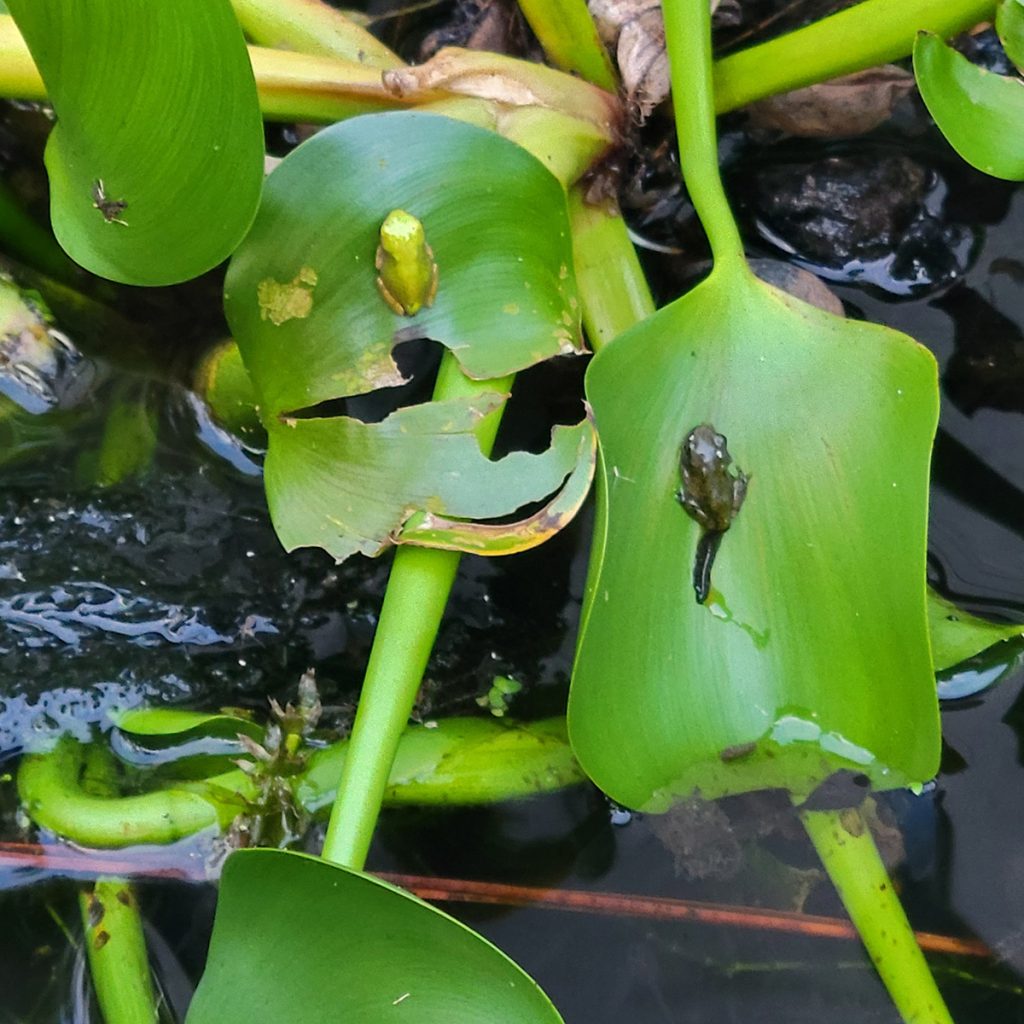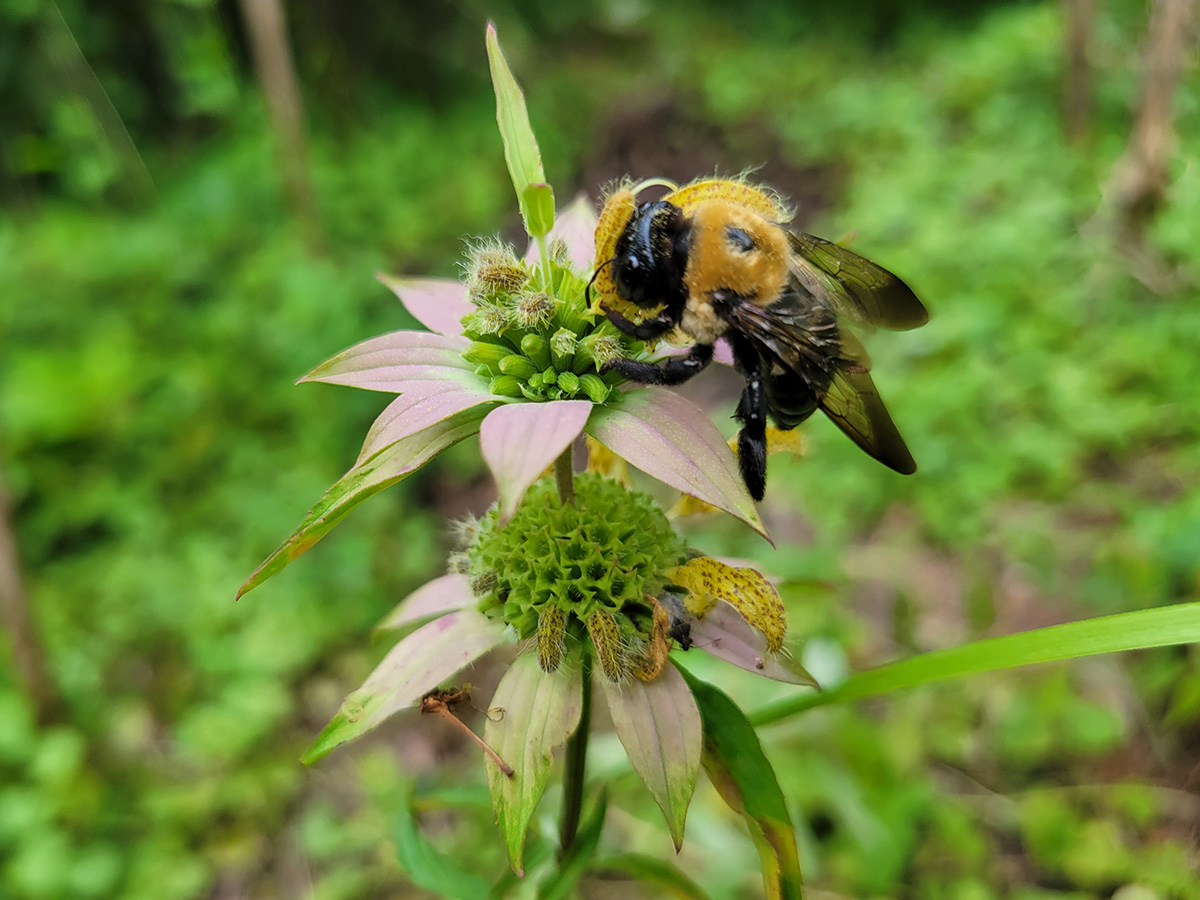This year was productive in terms of seeds and pollinator insects in spite of five weeks without rain in May/June followed by over three weeks of rain in July. I suppose species diversity increased as in previous years, but what I notice most in an increase in population sizes.
Gulf Fritillary Butterfly
Below is a photo of the Gulf Fritillary with its caterpillar on its host plant (Maypop/Passionflower Vine).
Native plants are where the insect base of the food chain feeds and reproduces. I don’t have any bird feeders, but songbirds and hummingbirds are always in my yard during the summer months. The birds are in my yard because that is where their native foods are, meaning both plant and insect.

Fun fact: Native insect diversity reduces pest populations like flies. The flies get eaten.
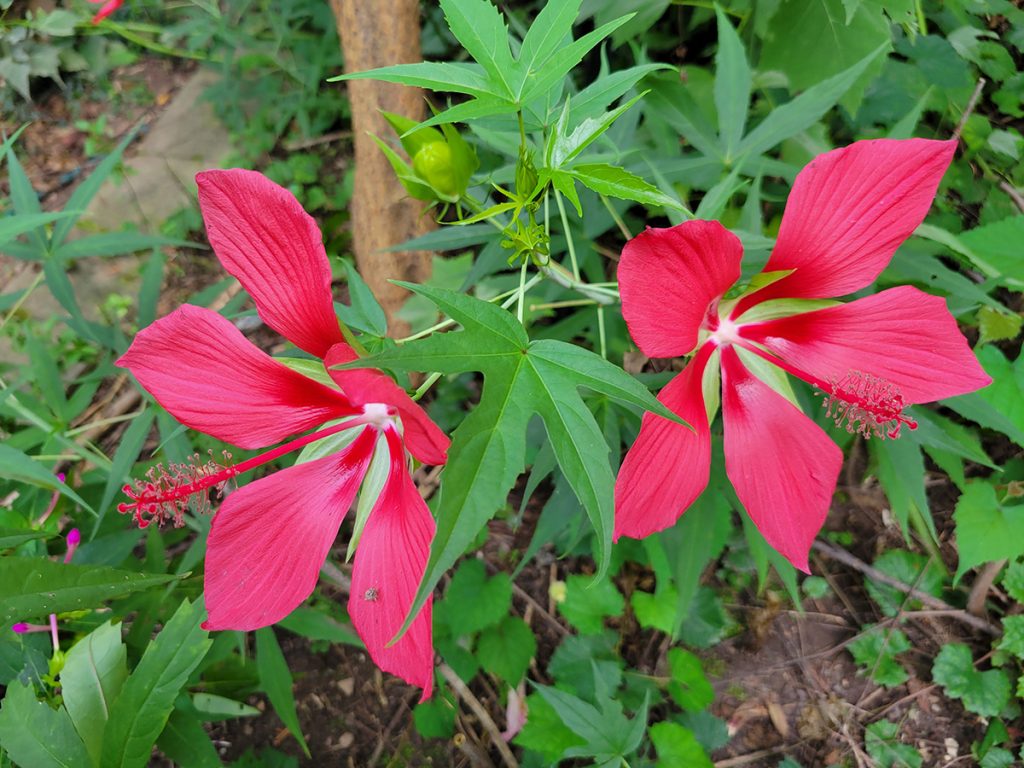
Scarlet Rose Mallow
Mallows can survive with little to no watering once established, at least that is what I have observed in north Georgia in a small lot between large trees that blocks harsh afternoon light.
I don’t think mallows would be viable without watering in sunblasted locations or in drier regions of the country.
Watering was required in my location to establish the young plants when there was no rain for over four weeks.
My advice for mallows is the same as for native plants in general: sow seeds in different areas of your yard and let the plant show you where it wants to grow.
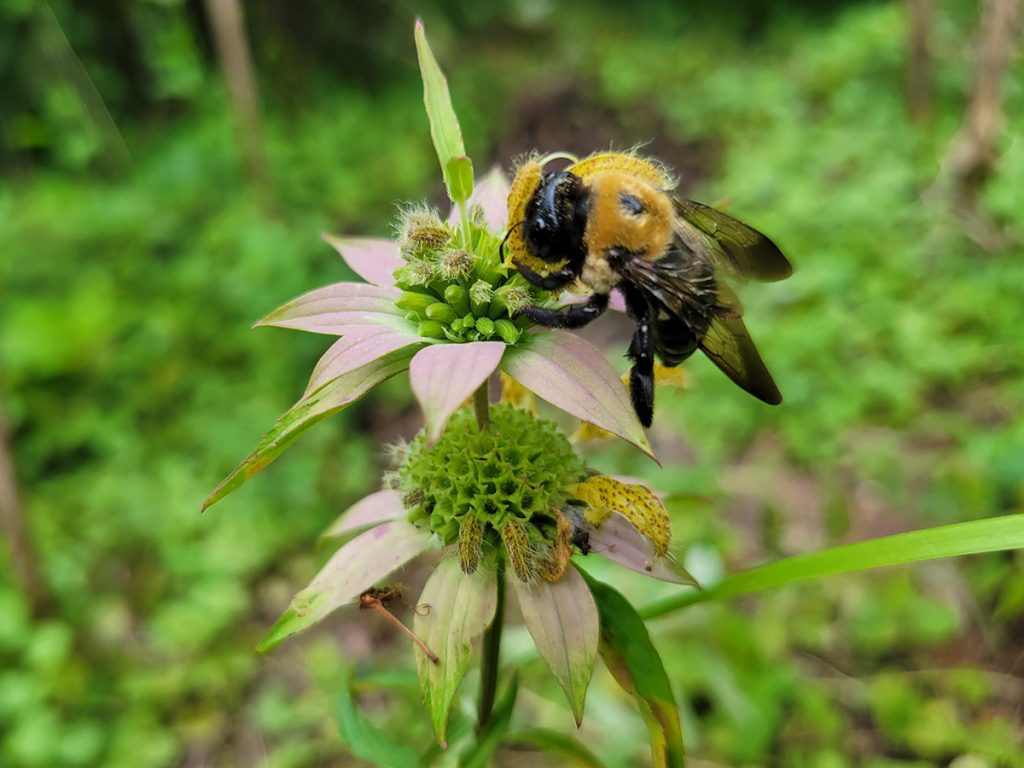
Wild Bee Balm
This is another Georgia native collected wild from a right of way before mowing.
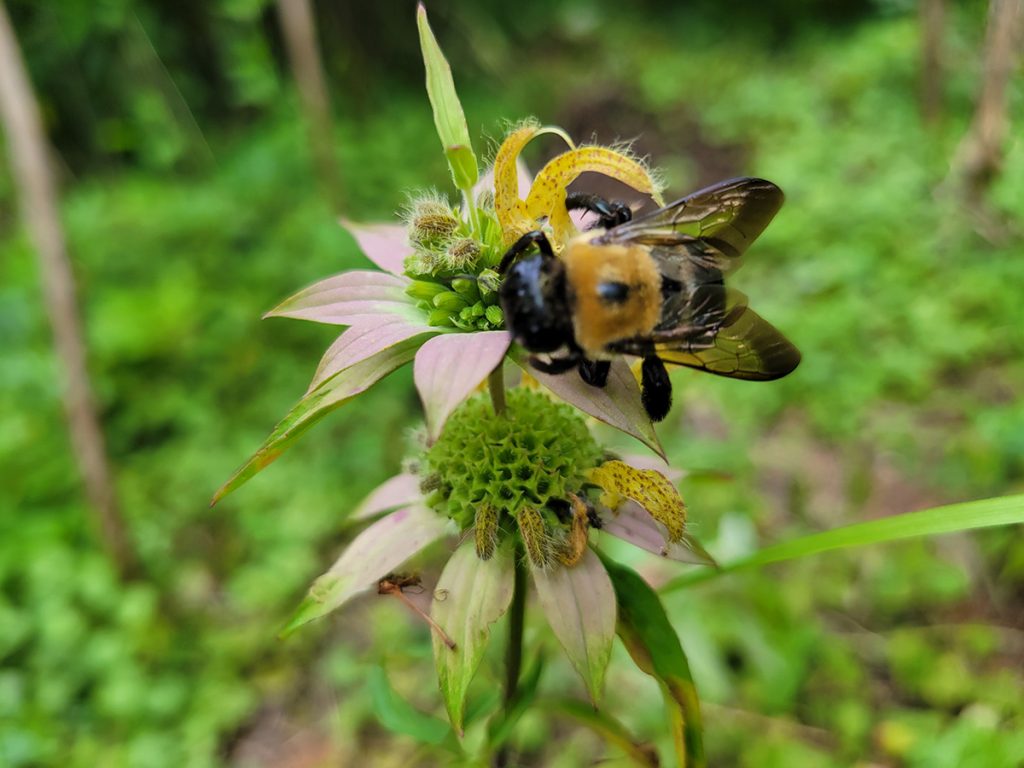
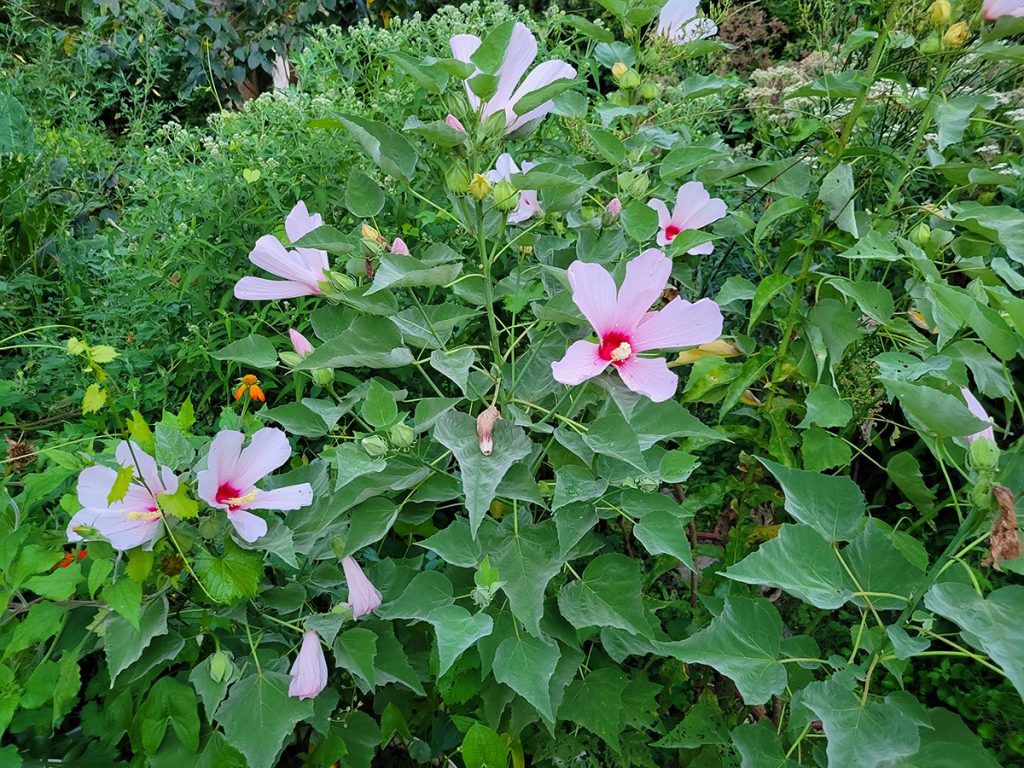
Wooly Mallow
Mallows grow in seasonally marshy locations but can be established in residential lots by watering until the plant is established.
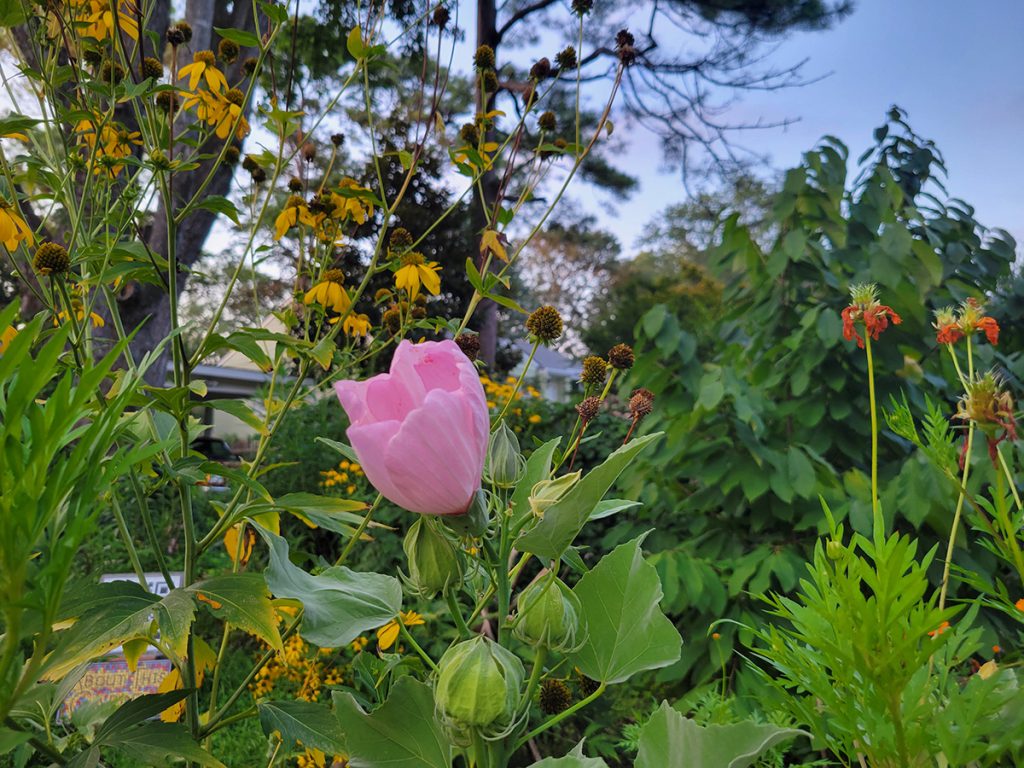
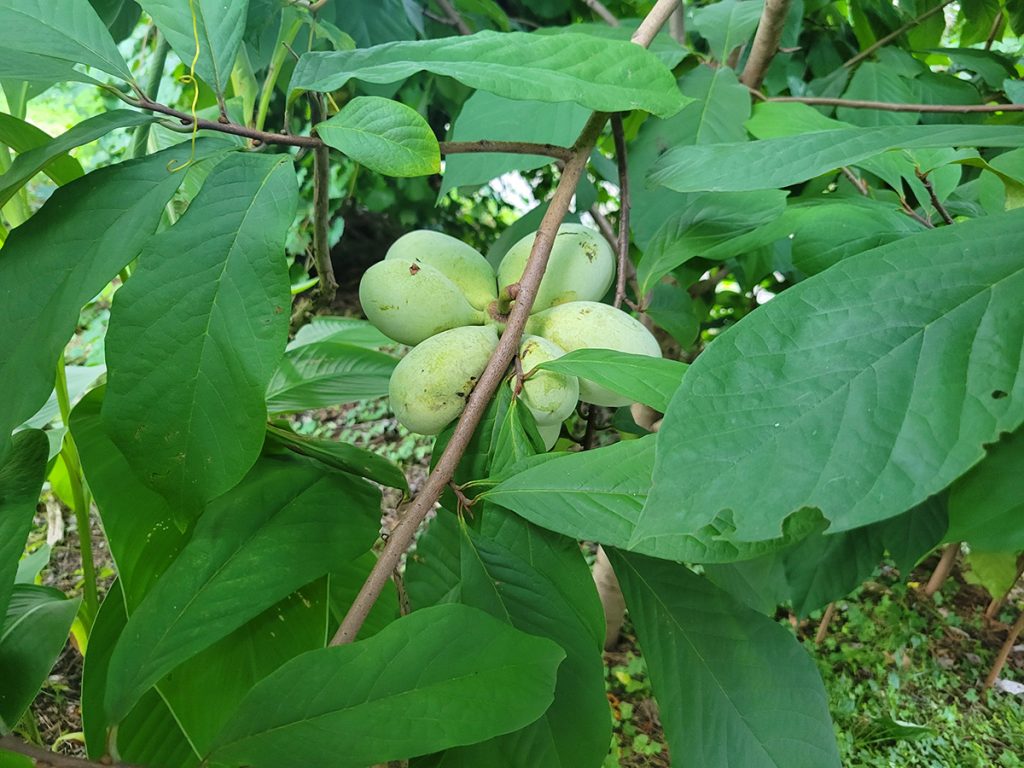
Pawpaws
The Pawpaw is small native tree that produces a fruit that are like a combination of mango and banana.
The Pawpaw’s roots produces numerous shoots that grow into more trees. In full sunlight, a Pawpaw tree will form a stand or thicket of growth if shoots are not cut back.
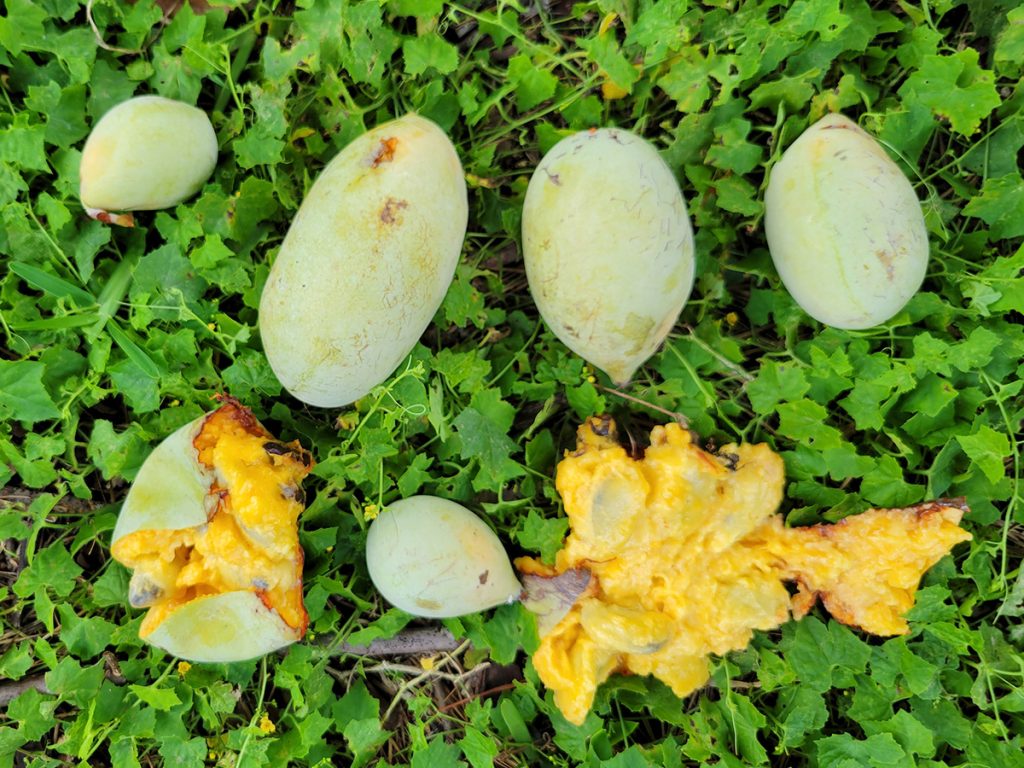
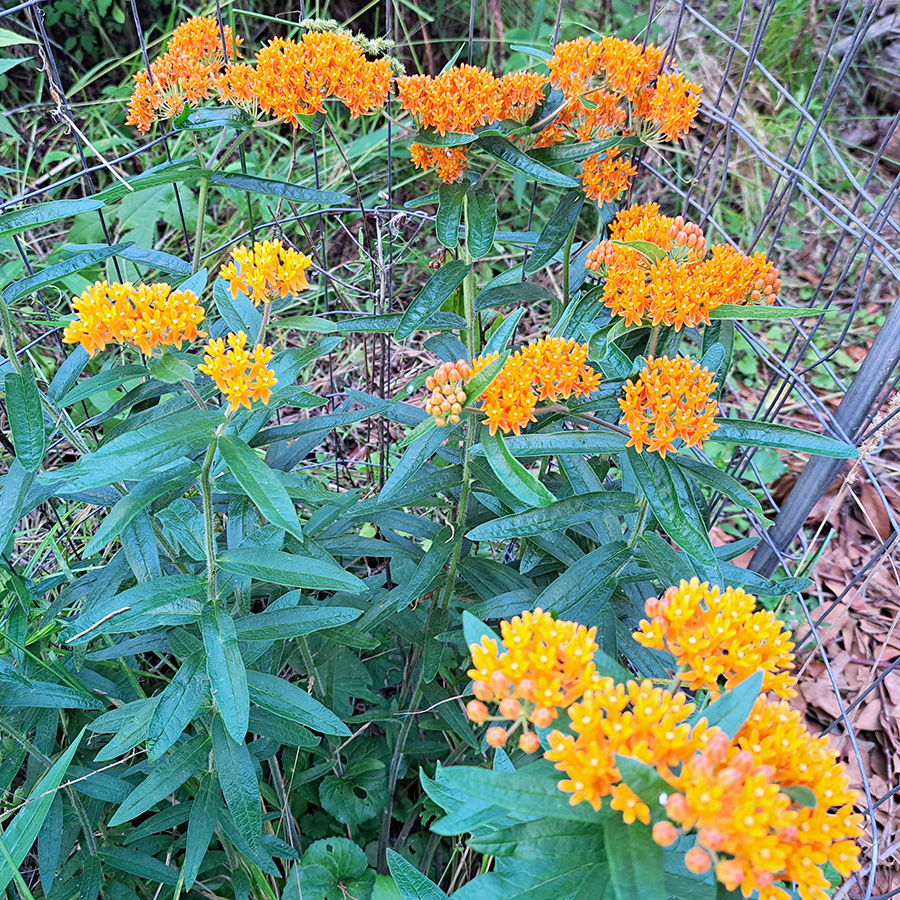
Various Perennial Flowers
Day Lilies, Ironweed, and Milkweed bloomed relatively early in the season.
For maximum impact (ecologically and visually), it is best to have a mix of native plants so that something is in bloom from spring to fall.
Having different species flowering at different times to cover all the warm months increases the number of lizards and bees and praying mantis the yard can support.
Flowers, seeds, and leaves ultimately feed everything.
Have something in bloom from April to October is the key for spectacular results.
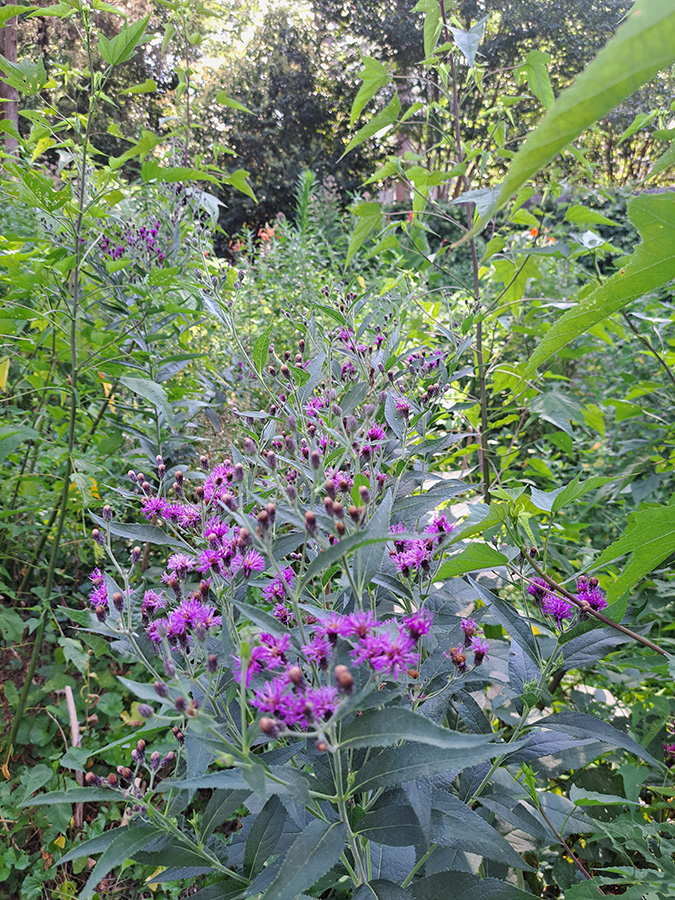
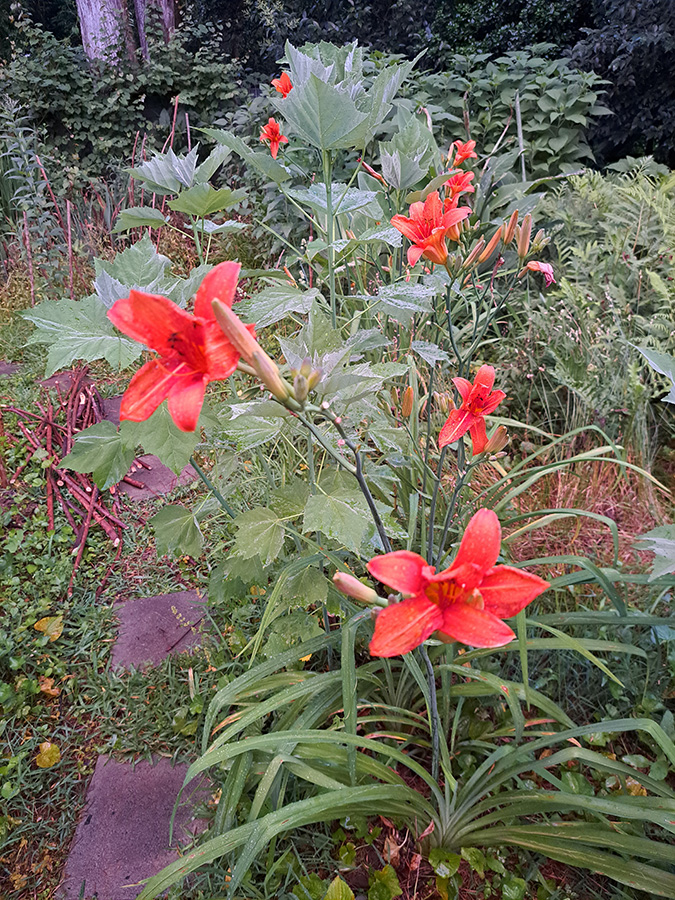
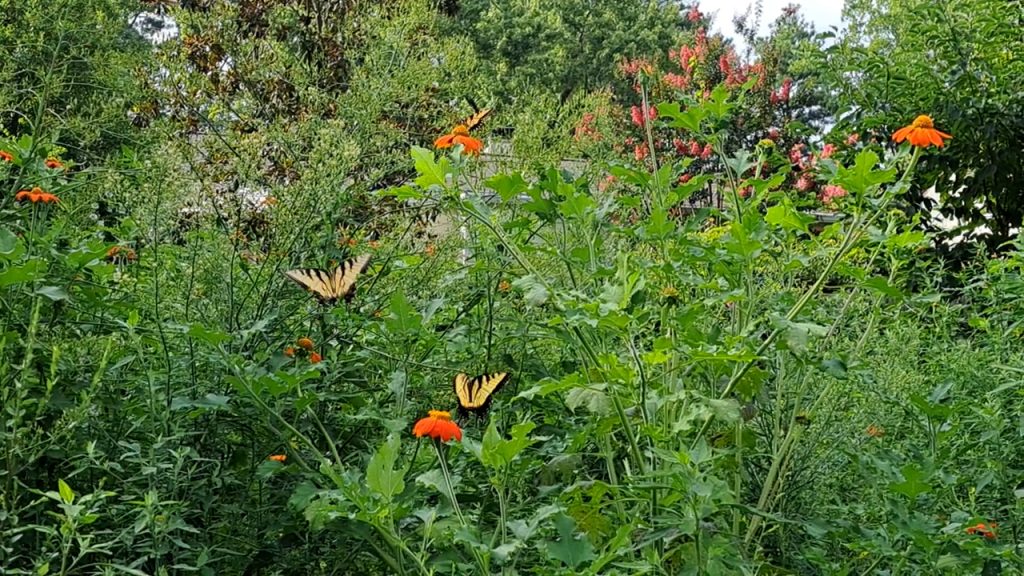
Wildlife
Cope’s Gray Treefrog produced thousands of tadpoles this year.
